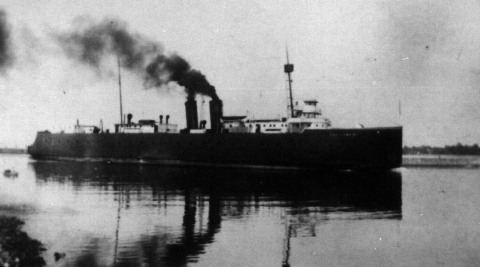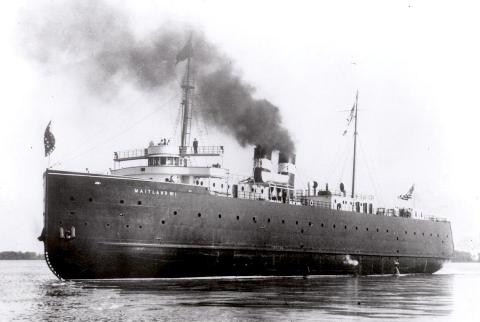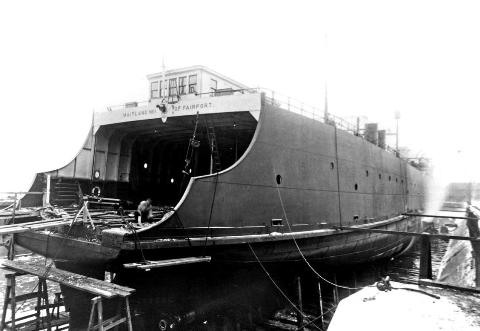With this article we begin what I hope will be a regular history
column about the communities surrounding Port Maitland. I will
recount items of interest that took place in the former townships
of Dunn and Sherbrooke, primarily dealing with the cottage area
where I grew up. We know it as Beckley Beach. On occasion we will
take a trip up the Grand River to Dunnville.
These
articles are not designed to stand the test of documented
accuracy. However, I do attempt to be as accurate as possible! The
information comes mostly from peoples' memories and different
people remember the same thing in a different way. Much of my
information comes to me by scouring the microfilms of old
Chronicles and other newspapers, books and articles as I put
together a chronology of my chosen subject. Many but not all of
the articles I will use in this column will have already been
published in a historyletter I started in 1998 called The Grand
Dispatch.
I will unashamedly use this column to solicit
information and photos of the area. If you have items you wish
written about or pictures you would be willing to loan, or better
yet donate; please drop me a note. Let me know how you feel about
these articles.
William (Bill) Arthur Warnick
180
Rosslyn Ave. South
HAMILTON, ON L8M 3J5
E-mail
wwarnick@netinc.ca
Phone 905 549-6086
Car
Carrier, AMaitland No.1, is Catalyst, creating Beckley Beach
The
Maitland No. 1, began service from Ashtabula Ohio to Port Maitland
on Saturday, October 21, 1916, one year and ten months after the
TH&B Railway began rail service to Dunnville. The three
hundred and fifty foot steel railway car ferry, which sometimes
sported the name ASS Maitland No. 1, was better known as AMaitland
No. 1. It would on this day, become the largest ship to have
entered the mouth of the Grand River, [sic] a record it would hold
for many years.
On the evening of this historic day,
when she was about to berth at the dock built especially for her,
Lake Erie, with gale forced winds churning it, was whipped into a
frenzy. This stormy night would come to be known as ABlack Friday.
It was the worse storm Lake Erie mariners had experienced in over
thirty years. The violent gale which raged across the lake took
the lives of sixty-nine sailors and sent several freighters to the
shallow depths of the angry lake. Newspaper
stories describe
rescues such as you might expect to take place on the high seas.
They describe horror stories of men clinging to life rafts for as
many as three days and then slipping into the bowels of the lake
as the rescue ships came into sight.
It was 7 a.m.
Saturday, and though she was a big ship with a draft of eighteen
feet and a beam of sixty feet she was forced to seek shelter. Her
Captain headed for Long Point Bay in the lee of Long Point. The
ship was most seaworthy, as she rode the heavy seas like an ocean
liner. She was equipped, with the latest in electrical lighting
throughout, with locking devices for each car, separately secured
and enclosed under the hurricane deck. Captain P. T. Haagenson,
had never entered the recently dredged harbour at Port Maitland.
He was nervous about bringing his new ship through the narrow
channel afforded him by the wooden piers on either side of the
Grand. Having just crossed the lake, where they were in site of
Port Maitland, the order was given to seek shelter.
Captain
Haagenson, instructed his wireless operator to send a message to
the Government wireless station at Port Burwell, notifying the
TH&B officials at Port Maitland that he was laying in calm
water and had a full cargo of thirty-two standard freight cars for
the Canadian Port. By 2 p.m. the great ship was again headed for
her new port. To the rousing reception of whistles from the fleet
in port, she entered the harbour. Ss if she had done so a thousand
times before, she turned around in the basin and slipped into her
berth, within inches of the place where the rails on the boat and
those on the dock connect, without a line being cast or any
assistance given by the crew.
This was the Maiden
voyage for the new TH&B Navigation Company, a subsidiary of
the TH&B Railway. Port Maitland hosted several railway
officials, among them being John Newton Beckley of Rochester NY,
President of the railway.
Only ship sailed by TH&B
The Maitland No. 1 would make a round trip from Port
Maitland to Ashtabula every fourteen hours for the next sixteen
years. She would be the only ship the navigation company ever
sailed. She was built in 1916 by the Great Lakes Engineering Works
at Ecorse, Michigan and launched that spring. The Maitland No. 1
spent that summer working on Lake Michigan for the Ann Arbor
Railway before being assigned to Port Maitland. Plans had been
made to build three ships and contracts were let. They were to be
known as Maitland No. 1, Maitland No. 2, and Maitland No. 3.
Maitland No. 2 was completed but would never sail for the TH&B.
While awaiting completion of the docks at Port Maitland, the
Maitland No. 1 had been leased to the Ann Arbor Railroad. So
impressed with her, and in need of additional ferries they
purchased the Maitland No. 2 while still under construction and
renamed her Ann Arbor No. 6. In the meantime the TH&B had
changed and modified their plans downward and cancelled
construction of Maitland No. 3.
|

Maitland No. 1 entering Port Maitland

Maitland No. 1 at Port Maitland

Maitland No. 1 at Port Maitland
|

